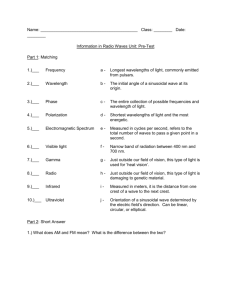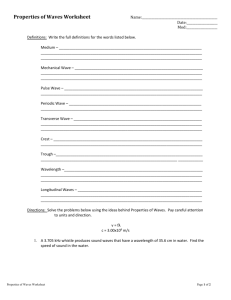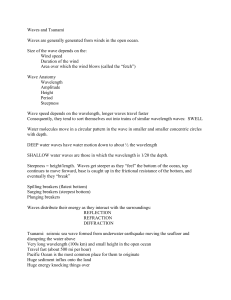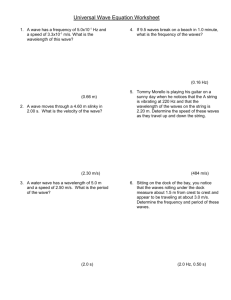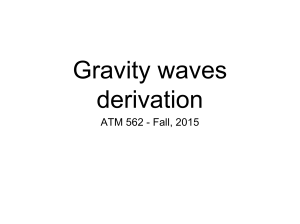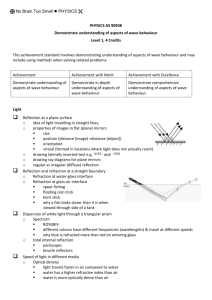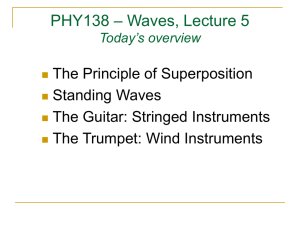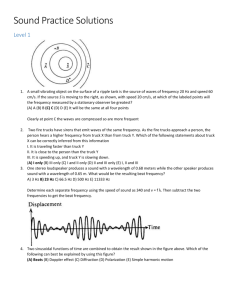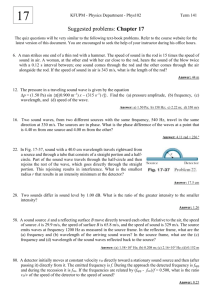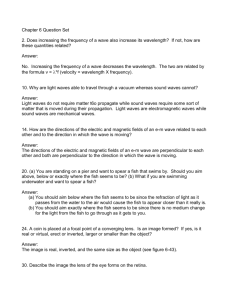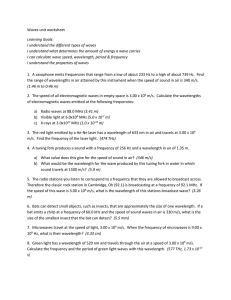Basics of Waves
advertisement
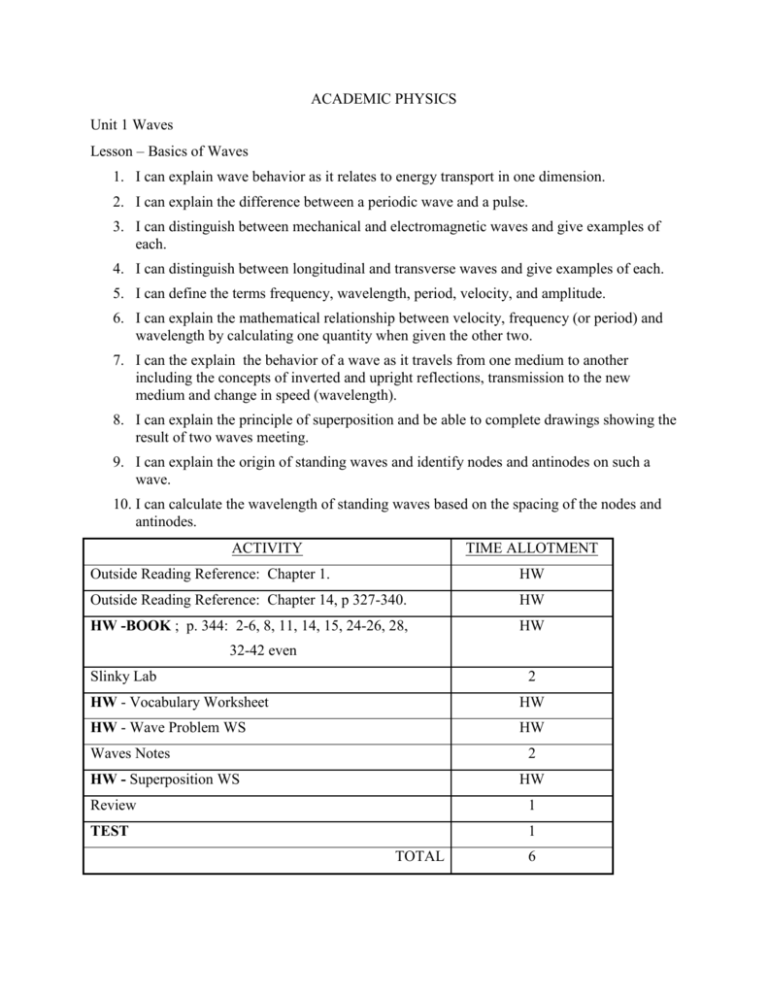
ACADEMIC PHYSICS Unit 1 Waves Lesson – Basics of Waves 1. I can explain wave behavior as it relates to energy transport in one dimension. 2. I can explain the difference between a periodic wave and a pulse. 3. I can distinguish between mechanical and electromagnetic waves and give examples of each. 4. I can distinguish between longitudinal and transverse waves and give examples of each. 5. I can define the terms frequency, wavelength, period, velocity, and amplitude. 6. I can explain the mathematical relationship between velocity, frequency (or period) and wavelength by calculating one quantity when given the other two. 7. I can the explain the behavior of a wave as it travels from one medium to another including the concepts of inverted and upright reflections, transmission to the new medium and change in speed (wavelength). 8. I can explain the principle of superposition and be able to complete drawings showing the result of two waves meeting. 9. I can explain the origin of standing waves and identify nodes and antinodes on such a wave. 10. I can calculate the wavelength of standing waves based on the spacing of the nodes and antinodes. ACTIVITY TIME ALLOTMENT Outside Reading Reference: Chapter 1. HW Outside Reading Reference: Chapter 14, p 327-340. HW HW -BOOK ; p. 344: 2-6, 8, 11, 14, 15, 24-26, 28, HW 32-42 even Slinky Lab 2 HW - Vocabulary Worksheet HW HW - Wave Problem WS HW Waves Notes 2 HW - Superposition WS HW Review 1 TEST 1 TOTAL 6 Wave Problems WS 1. 20m 2. 5s, 0.2Hz, 4m/s 3. 6.25m/s 4. 6.67m/s 5. 3.21m/s 6. 0.75m, 2.3e-3s 7. 0.575m, 1.67e-3s, 1035m Pg 346 32. 10s 34. a. 0.29m/s b. 0.21s 36. 6.0e-7m 38. a. 1.5e3m/s b. 1.00e-6s 40. 1350m 42. 4.2m/s c. 1.00e-6s









